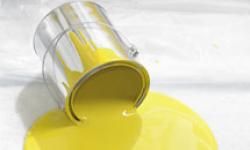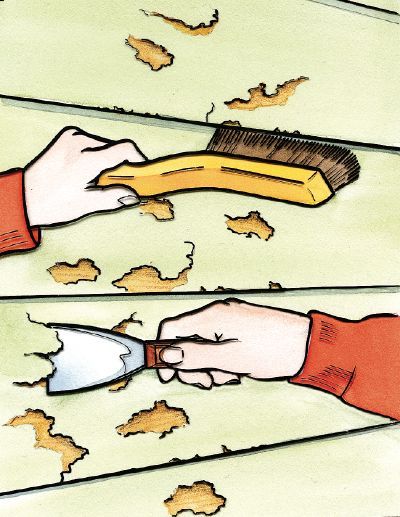The answer is everyone's favorite: It depends. Some paints are not considered household hazardous waste, but in some cases, you need to dispose of old paint very carefully.
Oil Paint
Oil-based paints are considered Hazardous Household Waste (HHW) and are not suitable for reuse after long storage. The label of an oil-based paint will say "oil-based" or "alkyd," or it will instruct you to clean brushes with mineral spirits or turpentine.
Paints of this type are flammable, toxic and contain harmful solvents, resins and pigments; very old oil-based paints (1978 and before) may also contain lead. For these reasons, oil-based paints must be taken to disposal facilities that accept HHW.
Many communities work to simplify this by holding annual or semi-annual HHW collection days.
Latex Paint
Latex or water-based paint, on the other hand, is not a hazardous waste, and can enjoy many reincarnations after its initial use.
Latex paints are those that clean up with soap and water. They're very common for both interior and exterior painting. Before we go into how latex paints can be disposed of, let's talk about what NOT to do.
Before 1990, about 30 percent of latex paints contained mercury and many exterior latex paints still do. For this and other reasons, latex paints must not be disposed of in liquid form. Do not:
- Pour latex paint into storm drains, onto the ground, or into creeks, streams or rivers
- Put cans of liquid paint out for regular trash pick-up
- Try to burn paint
Disposing of paint this way introduces contaminants into the air, soil and ground water that can eventually work their way into the food chain.
Avoid Over-buying
Each year, American consumers toss out 10 percent of the paint they've purchased. The main reason? They simply bought too much paint for their project.
You can avoid that mistake by using an on-line paint calculator to help you pinpoint how much paint your project will require. Two recommended sites are Ace Paint Estimator and PainterForum.com [source: Paints & Coatings Resource Center].



